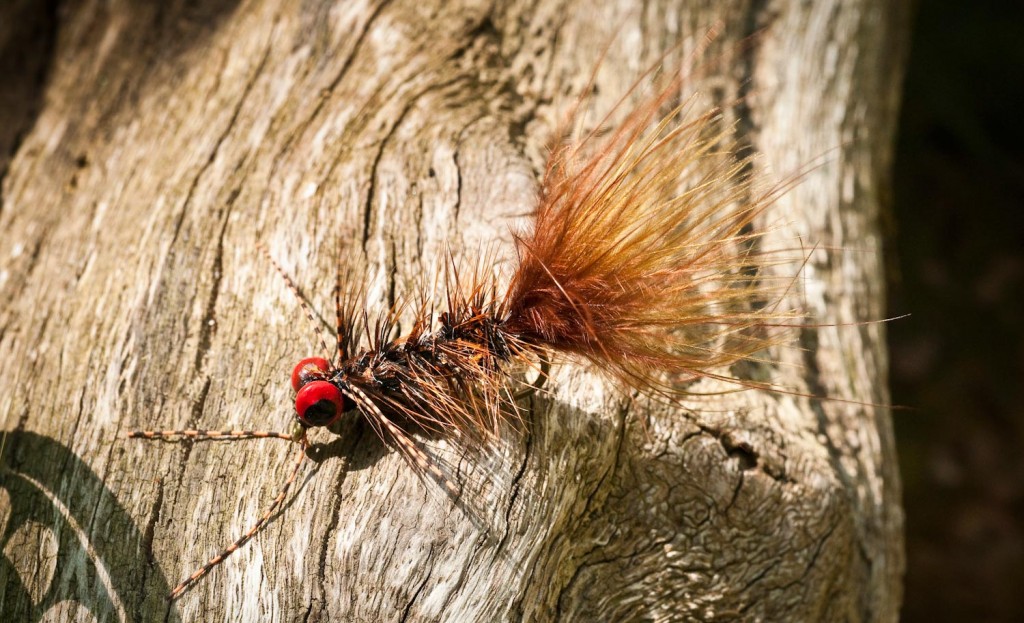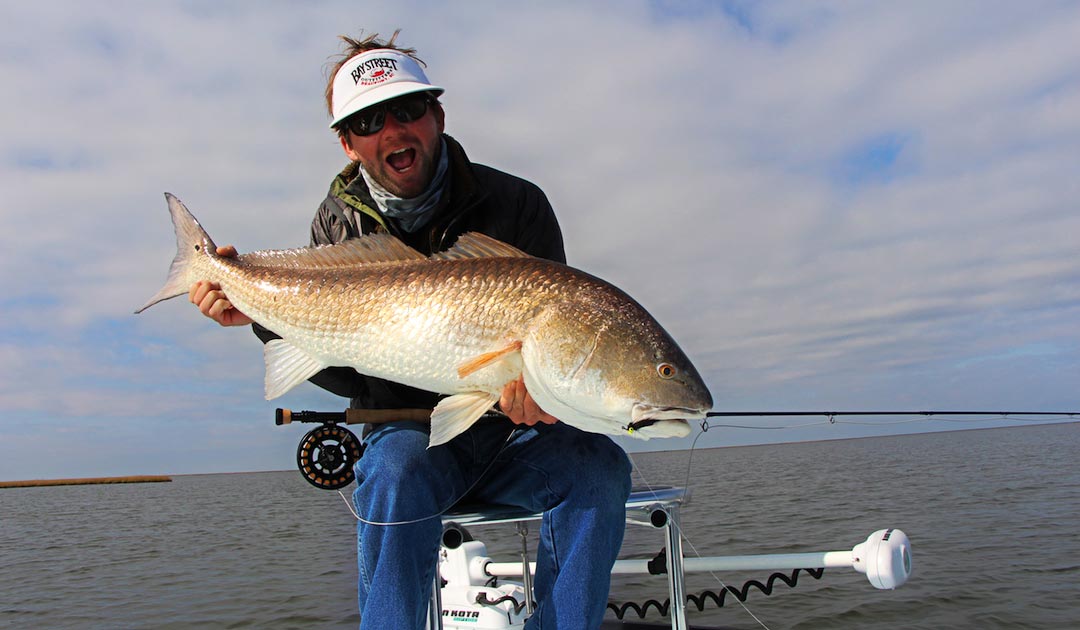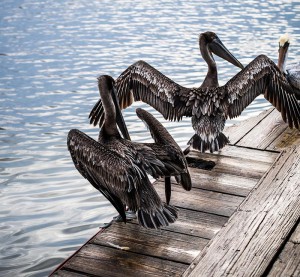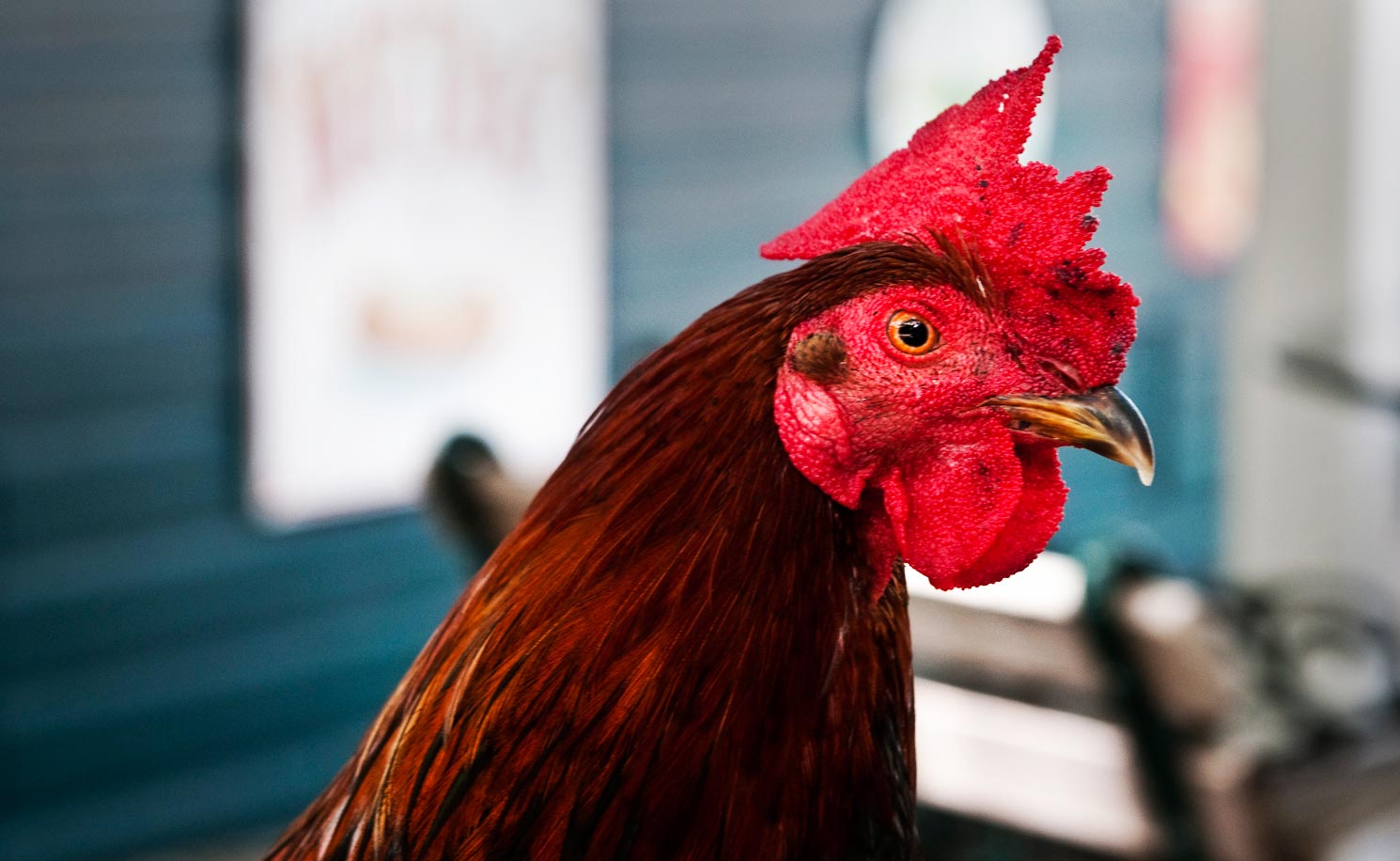
By Lauren Holt
“In hindsight, change was certainly on offer that Santeria Sunday morning on the Hooch”
“There is no being apart from becoming.” – Hegel
maahnk maahnk maahnk maahnk maahnk maank
I rolled over to find my phone and kill my alarm, groggy in the stillness and the purple dark of 5:00 am on a Sunday morning. It’s early for me – very early – but the sun would be up soon, and if I moved quickly, I could be on and off the Hooch in time for church. My phone said I could count on good water levels, so I loaded up and headed south. A fifteen-minute drive landed me in the nearly empty parking lot. It was a welcome though unsurprising sight. Rod rigged up and gear stowed, I portaged down to the water. As I walked, another noise emerged over the crunch of my boots and my boat on the gravel and debris left over from the most recent late summer storm.
bluck-bluck-bluck-bluck-bluck-bluck-bluck-bluckaaah bluck-bluck-bluck-bluckah
It’s funny how a sound can transport you. This one sounded like home, back in Northwest Arkansas, where we always had a few laying hens and a rooster or two milling around the farm. As I reached the water, though, a new sound met my ears – one that abruptly pulled me out of my reverie. Voices chanting. I couldn’t tell what they were saying, but the rooster certainly got the gist of their message, and he, for one, was not thrilled.
I launched my boat that morning to a chorus of frenetic chanting and a frantic rooster.
Then nothing. A quiet as startling as the ruckus it replaced. Maybe it should’ve given me pause, but it didn’t.
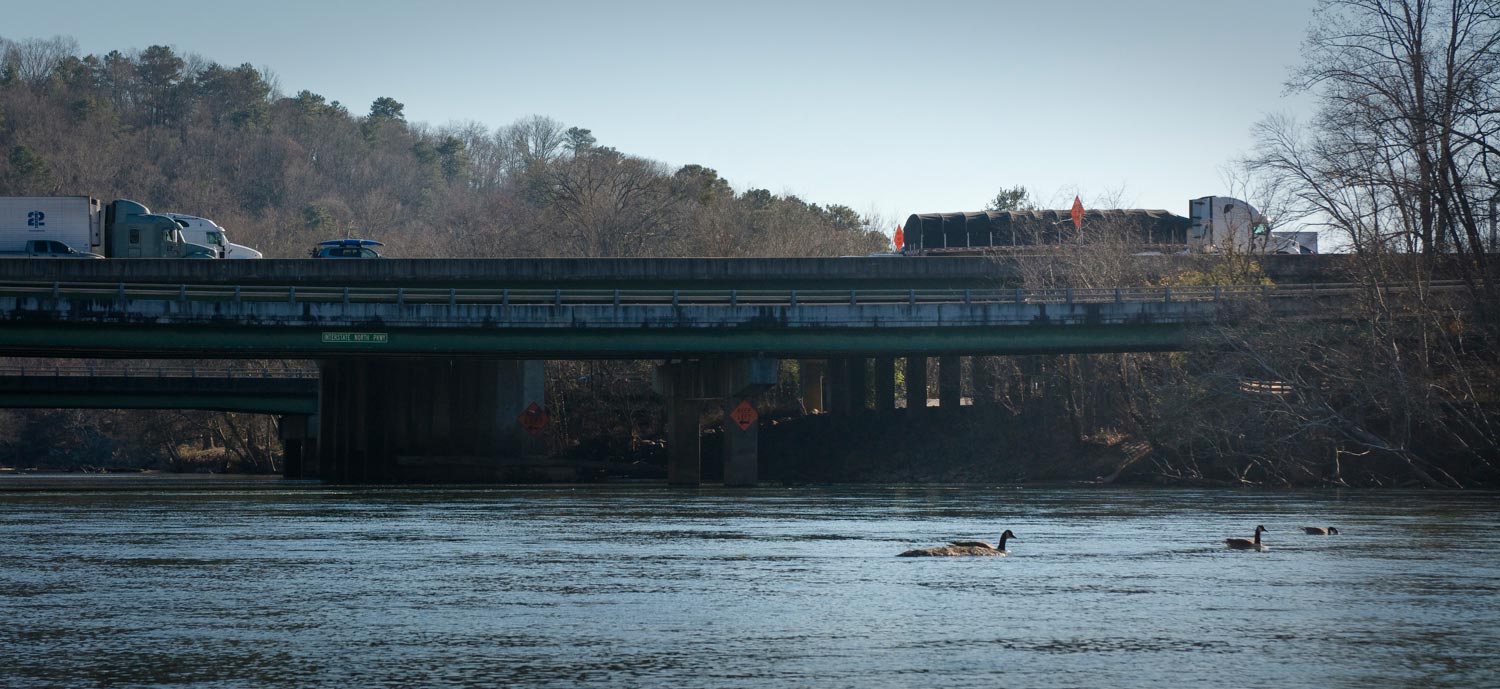
I made my way out into the water, a scattering of bright yellow flower petals the only concrete indication that I hadn’t dreamt the whole thing. This place – just wow. Pretty thoroughly lost in thought, I fished a bit, landed a couple of stripers, cleaned up, and walked up the church steps as the congregation rounded on the last verse of our doxology, “Awake My Soul, and with the Sun.”
If you’d told me back in Arkansas that I would witness a rooster and flower sacrifice on the Hooch, my years-ago self would’ve probably asked for the numbers of both the local police department and PETA chapter. But just like places change, they can change their people too, if we’re open to the experiences they offer us.
Though I haven’t moved nearly as much as many of the professionals who live and work in the Atlanta area, I have experienced my fair share of packing up and making a home for myself in a new place. From Northwest Arkansas – where my great-great-grandparents homesteaded and where, save my grandparents’ stint away from home for a little over a decade, no one but me has left – I moved first to college in central Arkansas, then to eastern Tennessee for my MA, then to Atlanta for my PhD and now my career. Every time I moved, I asked myself some version of the same set of questions: Where will I live? Where will I work? Where’s my river? Part of making a new home, for me, was finding new home water, and those questions gradually became my moving litany. I left the Kings River and my family for the Little Red, a completely different fish habitat and only about an hour from my undergrad alma mater. In Knoxville, I had the Clinch and the Smoky Mountains to explore close to home and the South Holston if I wanted to drive a bit. The move to Atlanta, though, gave me pause.
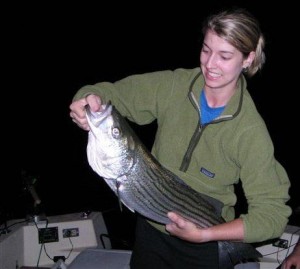
Lauren’s First Striper
The appeal of each of the rivers I had left was clear and straightforward. The Kings River meant home. The Little Red meant my first fish on a fly rod and big (as in world record) brown trout. The Smokies meant gorgeous hikes and eager native brookies. My options in Atlanta seemed to be DH trout fishing on the Chattahoochee, a place I’d only experienced in my imagination when Mrs. Brown would turn on Alan Jackson’s latest greatest hits during “rest and re-center” time, or long drives to far flung water. Neither option thrilled me. But Emory is in Atlanta, so that’s where I moved, in spite of the fact that when I thought about the river that would be practically in my backyard, the first things that came to mind were hot, muddy water and beer. Basically Mudcats, NatGeo-style. You can laugh at my naïveté. It’s okay.
In reality, the Hooch boasts a little over 430 miles of biological and geological diversity, resulting in numerous unique and complex fish habitats.
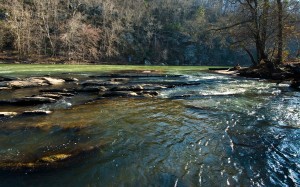 From its headwaters in the Blue Ridge Mountains to its confluence with the Flint River, it covers nearly 3500 vertical feet and over four latitudinal degrees and is punctuated by lakes created and held back by thirteen different hydroelectric dams. Its nearly 8800 square mile drainage supports hundreds of freshwater fish species, many of which feed the game fish anglers target in the small stretch of the river I’m most familiar with, the Chattahoochee River National Recreation Area, in the middle of the Piedmont geological province, on the upper left side of the paper plate I use to show visitors how to get around in the ATL. 50 miles of water, more or less, that supports brown trout and rainbows, shoal bass and stripers, carp and gar, sunfish and perch – a quiet, green retreat from the hustle and bustle of the city without actually having to leave it.
From its headwaters in the Blue Ridge Mountains to its confluence with the Flint River, it covers nearly 3500 vertical feet and over four latitudinal degrees and is punctuated by lakes created and held back by thirteen different hydroelectric dams. Its nearly 8800 square mile drainage supports hundreds of freshwater fish species, many of which feed the game fish anglers target in the small stretch of the river I’m most familiar with, the Chattahoochee River National Recreation Area, in the middle of the Piedmont geological province, on the upper left side of the paper plate I use to show visitors how to get around in the ATL. 50 miles of water, more or less, that supports brown trout and rainbows, shoal bass and stripers, carp and gar, sunfish and perch – a quiet, green retreat from the hustle and bustle of the city without actually having to leave it.
All these facts are great, and Gary Merriman or Andy Bowen or Mustache Rob or Henry Cowen or any number of other guides, shop owners, natives, or long-time residents could likely tell them more authoritatively than I did. I read them all before my move and remained skeptical – the new, different, and other failing to entice me away from my loyalty to rhododendron flanked paths up steep mountain grades. All my reading and imagining, though, could not give me the assurance I needed, failed to convince me that I was moving to a place with a river that could become meaningful to me. Facts alone don’t really count for much; it’s how those facts play out in real life that matters. My first few months in the ATL stayed long on Hooch facts but short on IRL experiences, but it didn’t take long for that to change and for the Hooch to take its place right up there with my home home water, where my family settled and where six generations now have played and learned to fish and swim, where my dad, my sisters, and I spent one of our last days together wet wading for brownies before I moved away.
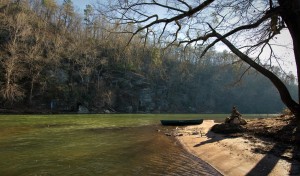 Fishing has long been a space where I can find some mental clarity against the backdrop of physical focus and routine, patterns and connections revealing themselves as physical repetition and concentration on a different task moderate some of the perceptual pressure I exert trying to see the order underlying things that seem disparate. That morning was no different. In the weeks leading up to that Santeria Sunday, I had been deep diving into Faulkner, letting his ideas, and others’ about him, roll around in my mind, sometimes barely attended to, other times the only thing in focus in my sometimes myopic literature- and idea-loving brain. A phrase a critic had used to describe Faulkner wouldn’t stop demanding my attention: his work “contains fury, laughter, tenderness, hatred, incongruity, ugliness, and beauty. Taken all together, it is a motley thing, ragged, unkempt, and strange.”
Fishing has long been a space where I can find some mental clarity against the backdrop of physical focus and routine, patterns and connections revealing themselves as physical repetition and concentration on a different task moderate some of the perceptual pressure I exert trying to see the order underlying things that seem disparate. That morning was no different. In the weeks leading up to that Santeria Sunday, I had been deep diving into Faulkner, letting his ideas, and others’ about him, roll around in my mind, sometimes barely attended to, other times the only thing in focus in my sometimes myopic literature- and idea-loving brain. A phrase a critic had used to describe Faulkner wouldn’t stop demanding my attention: his work “contains fury, laughter, tenderness, hatred, incongruity, ugliness, and beauty. Taken all together, it is a motley thing, ragged, unkempt, and strange.”
Bundled up in winter layers or sweating in a swimsuit, in high water or low, in a drift boat or on an SUP, providing company or solitude or distraction when solitude became too much, on the Hooch, I can be in an urban center and on the river surrounded by trees at the same time. I can fish for warm- or coldwater species. I can be fishing in the middle of a tube hatch and, two or three casts later, glance over my shoulder and realize I am utterly alone. I’ve marked countless hours and days there, seen relationships falter and flourish, watched seasons turn into years. It has been the source of and stood witness to my curiosity, my wonder and awe, my frustration, my despair, my triumph and excitement, my relief and gratitude. I’ve learned to fish alone there and learned its joys. I’ve caught beautifully marked browns and rainbows, feisty shoal bass, stripers bigger than the biggest one I ever caught back home. And yet I’m not blind to the Hooch’s flaws, its inconsistencies, its occasional tendency to leave me utterly frustrated. Trying to come to terms with these things, however, has only heightened my appreciation of this place.
My section of the Hooch is certainly good on paper, a prime trout fishery that also offers anglers access to a diversity of other fish species year-round.
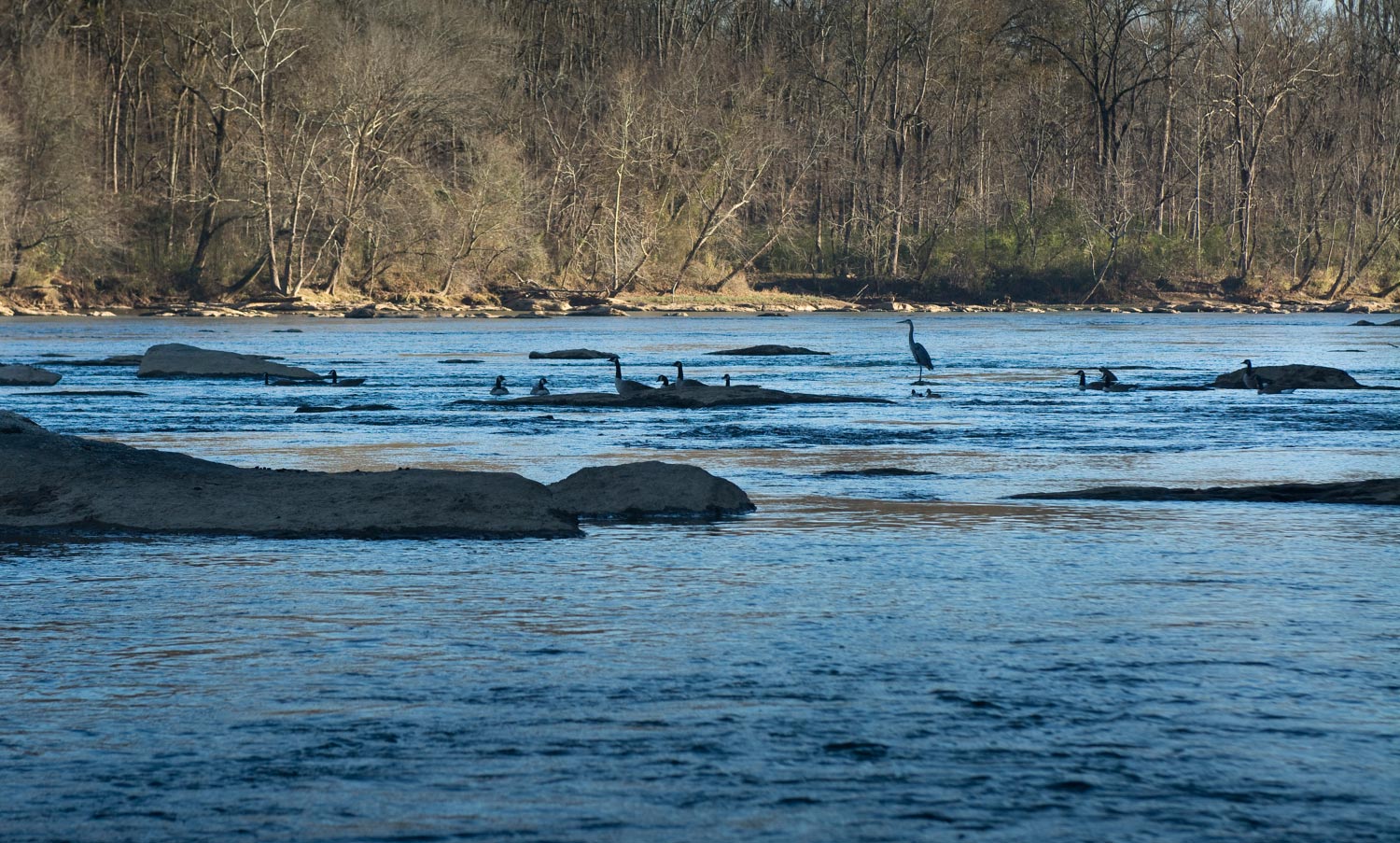
And yet we all know the Hooch is more than the sum of its parts. It is more than just a trout stream. It is more than just striper habitat. It is more than just a carp fishery. But how much more? While good on paper doesn’t always translate to a place or a person having the qualities it takes to grab and keep your attention, my adoptive home water does. You never know what you’ll encounter around the next bend in the river or at the end of your line, if you’re experienced or lucky enough. Striper or shoal bass, trout or carp. A hook-up or a hook-up (seen both), applause, a marriage proposal (experienced both). It can draw you back again and again and again, can persist in showing you something new. It can keep you learning and growing and engaged. If you let it. Sometimes we don’t until it’s threatened; instead, we enjoy it without pausing to appreciate, reflect, or understand.
The Hooch earned its on paper reputation in the nearly one-hundred-twenty years since men began raising hydroelectric dams there, its sharp bends and drops and the hollows and hills that surrounded them slowly submerged in the lakes that marked progress and power. You’ll probably catch a trout up by Buford Dam your first trip out, and maybe you’ll be content with that. Or maybe you won’t be. Maybe on your first or tenth or fiftieth trip you’ll sense a faint glimmer of its promise and look deeper, willing it to show itself to you again. Do you persist, exploring its nuances, tracing its subtle and ever changing curves and lines and riffles with equal parts patience, excitement, and trust? Or do you expect to be instantly gratified, as if the game is won by simply pointing out the existence of promise, only to be disappointed and dismissive when you realize it isn’t? Does this new place, this foreign water, become your home water too? Or does it remain a commodity, a thing you can use and name and measure and control?
Ragged, unkempt, and strange.
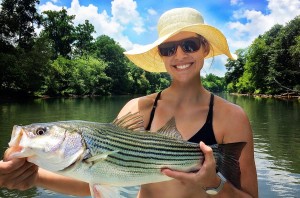 That assessment of Faulkner doesn’t stop there, though. It continues, it’s “easy to dismiss the kind of fiction that might not yield readily, docilely, to our first attempt to comprehend it,” and “while it can be pleasurable to move speedily through a work of fiction, there’s a different sort of pleasure to be had in lingering, backtracking, rereading the same page,” in letting the full and sometimes profound meaning of a sentence or a riffle or a novel or a person or a place reverberate through your brain and echo through your being, in being open to its pull, its impact, its invitation to and insistence upon change.
That assessment of Faulkner doesn’t stop there, though. It continues, it’s “easy to dismiss the kind of fiction that might not yield readily, docilely, to our first attempt to comprehend it,” and “while it can be pleasurable to move speedily through a work of fiction, there’s a different sort of pleasure to be had in lingering, backtracking, rereading the same page,” in letting the full and sometimes profound meaning of a sentence or a riffle or a novel or a person or a place reverberate through your brain and echo through your being, in being open to its pull, its impact, its invitation to and insistence upon change.
In hindsight, change was certainly on offer that Santeria Sunday morning, though the degree and type of change in store for me were exceeding abundantly above all that I could ask or think. Were I prone to look back for causes and order in past events, I might wonder if I didn’t somehow get caught up in the magic afoot and astir in that near-meeting on the river. Blood sacrifices are no small thing in Santeria, performed solemnly and respectfully and only when significant intercession and clarity are absolutely necessary. Maybe the santeros entreated Oshun, spirit of fresh water, sensuality, feminine sexuality, love and fertility who is often clad in yellow and who makes her home in a river. Or perhaps they called on Orunmila, witness to the creation of the universe and Orisha of wisdom, knowledge, and divination, who also favors yellow and has foreseen all destinies. Regardless, these santeros were likely praying for transformation, whether in luck or love or life, and I suppose, in a way, so was I. The thing that separated us in the cool, thick mists of that early morning, though, was that I didn’t yet realize it.
We were all three supplicants that morning, as we all are now, or can be, to a river or a place or a higher power, all agents of transformation in their own ways. The choice is ours, and the choosing isn’t difficult. The hard work only ever starts once the decision’s made to go all in, to embrace the not-simple, the not-comfortable, the expectation-defying messiness that will challenge and change and grow us. The easy path is lamentably popular: control and order what you know and never deviate from it. But becoming happens elsewhere, so I’ll opt for the din and the commotion of the work in progress, make my peace with the weird and the wonderful.
Or try to.
Lauren Holt
Gink & Gasoline
www.ginkandgasoline.com
hookups@ginkandgasoline.com
Sign Up For Our Weekly Newsletter!

